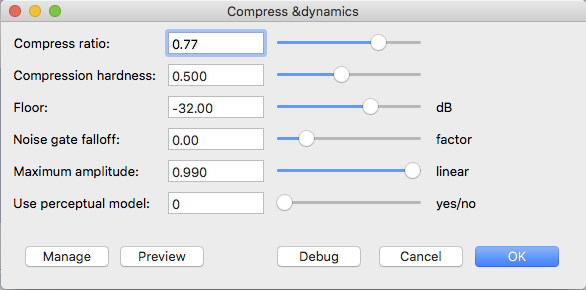“Dyson Compressor”
That’s beginning to ring bells. The classic broadcast transmitter processor had two parts. A long, slow, sloppy overall volume setter and a quick as a bunny compressor to catch the tips, peaks, and rapid transitions that the loudness setter would miss. So that took care of maintaining overall volume so you didn’t have to constantly crank the volume in your car up and down, and protection from abrupt high volume overmodulation which is illegal and could cause actual damage.
Scene shifts to Chris Capel trying to listen to opera in the car. Good luck with that. He designed a multi-part compressor which, I guess by accident, did exactly what the legacy broadcast compressors did, and with the same result. Level, controlled volume no matter where the lead singers wandered on the stage and how loud they got, and no overloading or clipping distortion.
It’s still available.
I use it exactly as it installs with only one change. Chris comes out of the box with very gentle corrections which you might like. I was after stiffer corrections and I changed the first value, Compress ratio, from the default 0.5 to a stiffer 0.77. When I do that, productions sound exactly like KPCC, the FM station in Pasadena.

Note it appears as “Compress dynamics…” in Audacity.
It has one bug. It’s a look-ahead compressor and it just hates running off the end of a show. The solution is put some sound work at the end of your show that you don’t want. Let Chris chew on it and then cut it off later. My particular job was a podcast where I only wanted the middle bit and I didn’t even know about this bug until somebody with tighter requirements mentioned it.
This is version 1.2.6, the last one before Chris reached end-of-life.
compress.ny (16.9 KB)
Koz